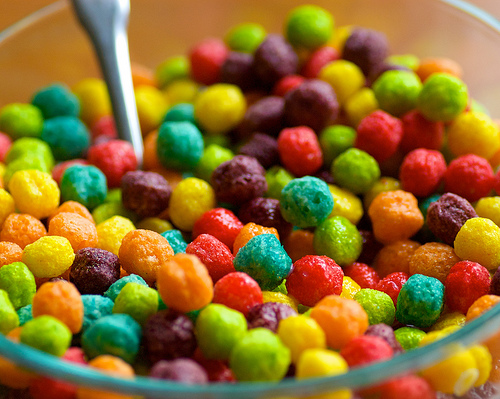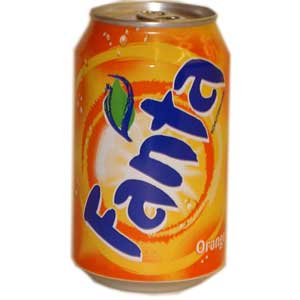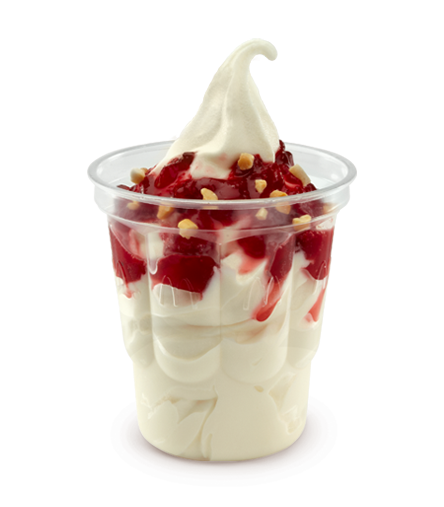Remember when you’d get done with a bowl of Froot Loops and the milk would be blue? Those were the days. But where did that color come from? And are we all going to regret slurping up that milk?
What are food color additives?
A food additive is defined as:
Any substance not normally consumed as a food in itself and not normally used as a characteristic ingredient of food, whether or not it has nutritive value.
Thanks for nothing, definition. So basically, a food additive is something that doesn’t normally occur in the food we eat — it has to be added… hence the name.
There are many types of food additives: preservatives, sweeteners, firming agents, anti-caking agents, etc. (For a full list of food additives see the FDA site or Health Canada, which has a handy Food Additive Pocket Dictionary — great for when you can’t remember the difference between isopropyl alcohol and isobutane.)
Color additives are categorized as either dyes or lakes.
Dyes dissolve in water and are manufactured as powders, granules, liquids or other special-purpose forms. They can be used in beverages, dry mixes, baked goods, dairy products, jams, pudding, pie filling, yogurt, popsicles, pet foods and a variety of other products.
Lakes are the water-insoluble form of the dye. Lakes are more stable than dyes and are ideal for coloring products containing fats and oils, or items without enough moisture to dissolve dyes. Typical uses include coated tablets, cake and donut mixes, cheese, margarine, candy and chewing gums.
Where do food colors come from?
Humans have long known that certain plants, animals, and minerals will stain surfaces such as fabric, skin, wood, and food. Naturally occurring pigments in these plants and minerals — or the chemical reactions that can occur (e.g. when things go green with the oxidization of copper) — create the colors. This includes things like:
| Pigment type | Where it’s found | Color created |
| Anthocyanins | Dark-colored berries; beets | Blue-purple |
| Canthaxanthin | Certain fish; algae | Pink/orange |
| Chlorophyll | Leaves of green plants/algae | Green |
| Charcoal | Burned wood | Gray-black |
| Cochineal | Insects | Red-purple |
| Iron oxide | Rusting metal | Reddish brown |
| Paprika | Ground chili peppers | Orange-red |
| Saffron | Crocus flowers | Orange-yellow |
| Turmeric | Turmeric plant root | Bright yellow |
All of these, by the way, are legal “natural” food dyes.
With the advent of industrial processing, many food dyes were originally synthesized from coal tar, a carcinogen. Now they tend to be petroleum (oil) based.
Types of food color additives
In the United States, the Food and Drug Administration divides food color additives into two groups: certified, and exempt from certification.
Certified colors are synthetically produced (or human made) and used widely because they impart an intense, uniform color, are less expensive, and blend more easily to create a variety of hues. Only 9 are permitted in the U.S. (More on this below.)
Colors that are exempt from certification include pigments derived from “natural” sources such as vegetables and animals as well as metals/minerals such as aluminum, silver, iron, and titanium dioxide. These are usually more expensive, and may add unwanted or unintended flavors to foods.
Why do manufacturers use food color additives?
Manufacturers use color additives to cover up an absence of natural color (e.g. in margarine), offset color loss due to light/air/temperature exposure, and give the product “added value.”
See the food color additives on the ingredient panel of Froot Loops? What color do you think Froot Loops were before all those chemicals were added? (Hint: See All About Breakfast Cereals.)

What you should know about food color additives
The most widely used dyes are Red 40, Yellow 5, and Yellow 6 – accounting for 90% of all dyes used. They contain carcinogens and may cause allergic reactions. Each year, about 15 million pounds of synthetic dyes go into the U.S. food supply (well, the “processed” U.S. food supply).
Since 1955 our consumption of food color additives has increased by five times. Translation: the U.S. eats a lot of processed foods.
What are the problems with food color additives?
There are some potential problems with food dyes, specifically:
- Carcinogenicity – leading to cancer development
- Genotoxicity – leading to mutations or damaging chromosomes
- Neurotoxicity – leading to the damage of nerve tissue
Banned food dyes include:
- Green 1, Red 1 – promote liver cancer
- Orange 1, Orange 2, Violet 1, Red 2, Red 32 – carcinogenic
- Sudan 1 – toxic
- Yellow 1 and 2 – lead to intestinal lesions
- Yellow 3 and 4 – promote heart damage
While some studies show that certain dyes aren’t themselves strong carcinogens, there may be a synergistic effect. Thus, various food dyes in a single processed food could lead to more potent carcinogenicity.
There are still nine food dyes permitted by the FDA. According to the FDA, these nine dyes don’t have enough evidence to warrant a ban.
FD&C Blue Nos. 1 and 2
I remember hearing stories from the nurses at the hospital where I worked, about using Blue no. 1 in feeding tube solutions. They did this with the intent to trace the flow of liquid into the gut and not the airway (because a feeding tube entering the lungs can lead to pneumonia).
Animal studies indicate that small amounts of Blue no. 1 are absorbed through the GI tract. That’s not good. And what’s really not good is that the animals in those studies were “healthy,” not confined to the ICU. People getting tube feeds in the ICU tend to have weak GI tracts. Beginning in 1999 a series of reports appeared that indicated Blue no. 1 could pass across the digestive tract and into the blood, often with catastrophic penalty. In 2003 the FDA advised against putting this dye in feeding tubes.
But it’s still in food.

FD&C Green No. 3
May promote cancer in animals and isn’t used very often in the North American food supply.
FD&C Red Nos. 3 and 40
Red 40 is one of the most common food dyes (check out Orange Crush) and might promote tumors in animals. Red no. 3 has been around since 1907. You know those maraschino cherries in your Shirley Temple? Those have been colored with red no. 3. Red no. 3 is an animal carcinogen and is genotoxic.
FD&C Yellow Nos. 5 (tartrazine) and 6
These dyes have connections to hypersensitivity reactions. The chemical structure is very similar to benzoate and salicylate (the active ingredient in aspirin). Yellow no. 5 seems to be mutagenic (aka mutation-causing; DNA-damaging) in animals and might also have random contaminants. Yellow no. 6 might also include contaminants, but doesn’t appear to promote cancer.
Orange B
Not much to say about this except I would like to have this name if I were a rapper. Actually, orange B is only permitted for use in sausage casings. Animal studies show potential problems with the spleen, lymphatic system and kidneys when exposed to orange B. The FDA wanted to ban this in 1978, but never followed through because most food companies stopped using it.
Citrus Red No. 2
Often added to orange peels. Enough of this stuff is produced each year to color 2 billion oranges. It seems to promote cancer and tumors in animals.
Note: FD&C stands for Food, Drug and Cosmetic
So, “natural” is OK, right?
Well, that depends. Some “natural” food additives are likely just fine.
- In the case of dehydrated beets, for instance, it’s probably not a big deal.
- With beta-carotene, the worst that’ll probably happen is you turning orange from over-consumption.
- Turmeric comes from the ginger family of plants, and may have anti-inflammatory properties, although there’s probably not enough of it in your yellow mustard to make that mustard a health food.
Other “natural” food additives might be more problematic. For example:
- Annatto extract – a carotenoid extracted from a tropical tree seed (Bixa orellana), often added to cheese. Has been implicated in IgE mediated allergic reactions.
- Cochineal extract or carmine is a red dye made from crushed cochineal beetle. It’s now listed on the ingredient label as cochineal extract or carmine (before 2009 it didn’t need to be). 70,000 beetles may be killed to produce one pound of this red dye. Has been implicated in IgE mediated allergies.
- Caramel color – this makes cola brown and beer gold. Caramel color is the most commonly consumed food coloring ingredient in the world. It’s produced by heating carbohydrates (like fructose, dextrose, or invert sugar) with a food-grade acid (like sulfuric, phosphoric, or citric) to break the sugar bonds. Think of caramel color as burnt sugar. Negative health consequences of caramel color are unlikely as long as someone doesn’t consume loads of it. (For more on the problems with the Maillard reaction, see All About Cooking & Carcinogens.) There is the potential of an allergic reaction.
- Titanium dioxide, which makes things white (such as your soymilk), has recently been classified by the International Agency for Research on Cancer (IARC) as an IARC Group 2B carcinogen — ”possibly carcinogenic to humans”.
- Aluminum, used as an additive in a variety of foods such as cake decorating materials, canned seafood (including caviar), and relish, might cause adverse effects related to reproduction, neurological behavior and neurological development.
How are additives regulated?
In 1938, after people raised concerns about dyes in food and beauty products, the US passed the Food, Drug and Cosmetic Act. In 1960, the Color Additives Amendment was enacted, which ruled that the FDA had to approve any new food color additive before any food color additive could hit the market.
Relative to other industrialized regions, the U.S. tends to have weaker food regulations.
In the European Union (EU), the Community legislation on food additives is based on the principle that manufacturers can use only those additives that are explicitly permitted. Food additives in the EU may only be permitted if:
- there is a technological need for their use,
- they do not mislead the consumer,
- they present no hazard to the health of the consumer.
Most food additives may only be used in limited quantities in certain foodstuffs. If regulations don’t specify a particular upper limit for a particular additive, that additive must be used according to good manufacturing practice — only as much as necessary to achieve the desired technological effect.
In Canada, food color additives are regulated by Health Canada, which is currently considering legislation that will require manufacturers to list which colors they use… instead of just saying “color”.
Why are food color additives important?
If you eat processed food, you likely eat food color additives. Many experts have raised health concerns about food color additives.
Food additives and children
The European Union (EU) requires that food color additives must have a warning label when added to food, since they may cause adverse effects on activity and attention in children. You’ll currently find the following warning on the label:
“May have an adverse effect on activity and attention in children”
In the U.K., almost 30% of kids under 11 years old have experienced problems with consuming food additives. Still, food color additives don’t seem to provoke as many complications as other additives (e.g., aspartame, monosodium glutamate, etc.).
Researchers have speculated on behavioral problems related to food coloring ingestion since the 1970s. A 2004 meta-analysis concluded that artificial dyes influence children’s behavior, and two studies funded by the British government found that mixtures of dyes (along with the preservative sodium benzoate) unfavorably influence the behavior of kids.
In the U.K. the same food products we have in the U.S. are colored with different additives.
 |
|
| In the U.S. | In the U.K. |
| Fanta orange soda is dyed with Red 40 and Yellow 6 | Fanta orange soda is dyed with pumpkin and carrot extract |
 |
|
| In the U.S. | In the U.K. |
| Kellogg’s Strawberry Nutrigrain bars are colored with Red 40, Yellow 6 and Blue 1 | Kellogg’s Strawberry NutriGrain bars are colored with beetroot, annatto and paprika extract |
 |
|
| In the U.S. | In the U.K. |
| McDonald’s Strawberry Sundaes are colored with Red dye 40 | McDonald’s Strawberry Sundaes are colored with strawberries |
Side rant: Before you get ready to throw down at the FDA offices, consider what foods we are talking about here. Orange soda, cereal bars, and strawberry sundaes? I don’t care if those are colored with rare flower petals from Fiji – if you consume them on a regular basis, your health is probably going to suffer.
Most unfavourable responses to food color additives do not involve the production of IgE antibodies, except if there is an allergy to a food coloring derived from a plant/animal source (e.g., annatto extract, cochineal extract, etc.).
PDF Summary of food dye studies (source: Center for Science in the Public Interest)
Summary and recommendations
While a few food color additives may not show direct evidence of causing health problems, many do. Further, food color additives are unlikely to promote health and longevity (but hey, you never know). So – why bother consuming them at all?
The easiest way to avoid food color additives is to eat whole, unprocessed foods (except for that orange peel coloring, as well as substances like beta-carotene in chicken feed to make anemic yolks brighter yellow). If possible, buy from small farmers and ask about how they treat their foods and animals.
If you buy a processed food, check the ingredients. When you check the ingredients, if you see any of the following words, set it down and back away slowly:
- Artificial color
- Green, orange, red, violet, blue, or yellow followed by a number
- Caramel color
Extra credit
One study in rats indicated that blue food dye could actually prevent paralysis after spinal cord injury.
Eat, move, and live… better.©
The health and fitness world can sometimes be a confusing place. But it doesn’t have to be.
Let us help you make sense of it all with this free special report.
In it you’ll learn the best eating, exercise, and lifestyle strategies — unique and personal — for you.
Click here to download the special report, for free.
References
Click here to view the information sources referenced in this article.




Share